This comparison of hydroponics versus traditional farming is written for regular people and eaters like you and I.
So much of the information out there is just a list of the advantages of hydroponics and geared towards prospective growers and activists.
But this is still food we are talking about, and the purpose of food is to nourish our bodies. In the ideal world we’d do this while still protecting the earth and improving the soil for future generations.
So where does hydroponic agriculture fit into that conversation?
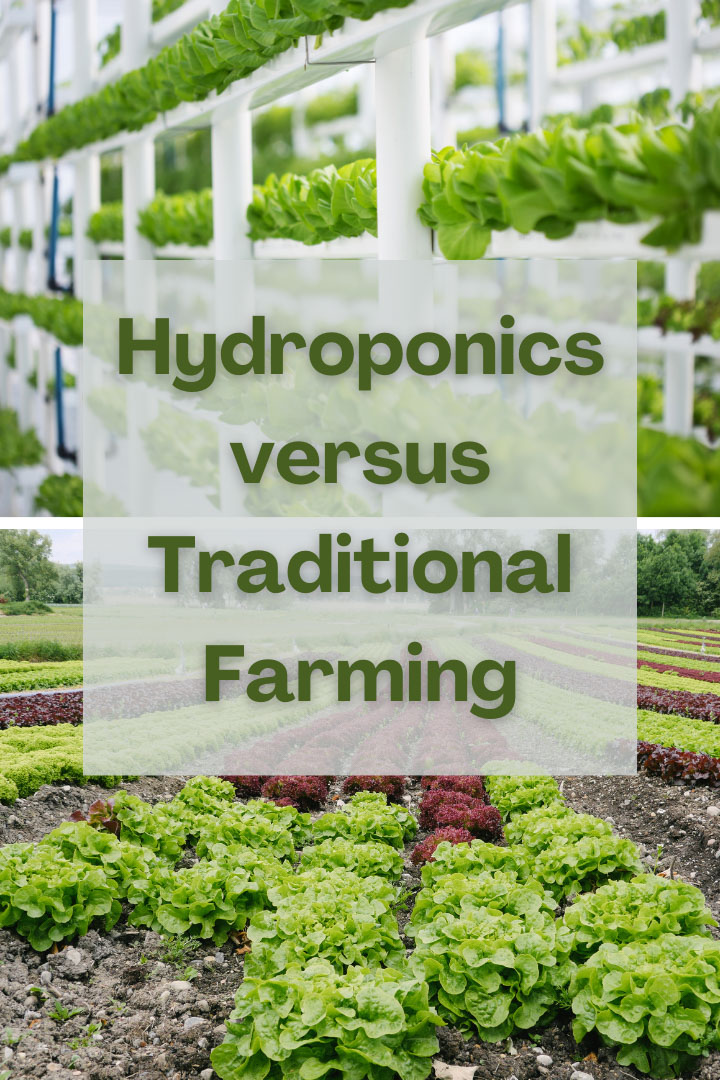
As hydroponic farms are becoming more and more common in recent years, I’m super excited to cover this (controversial) topic!
My comparison of hydroponics versus traditional agriculture will include:
- What is hydroponics compared to traditional farming?
- Facts about hydroponic agriculture
- Hydroponic organic versus soil-grown organic
- How to recognize hydroponic produce at the grocery store
To kick off this deep dive into hydroponics versus traditional farming I’ll explain what is hydroponic agriculture and what I mean by traditional farming.
What is Hydroponic Agriculture?
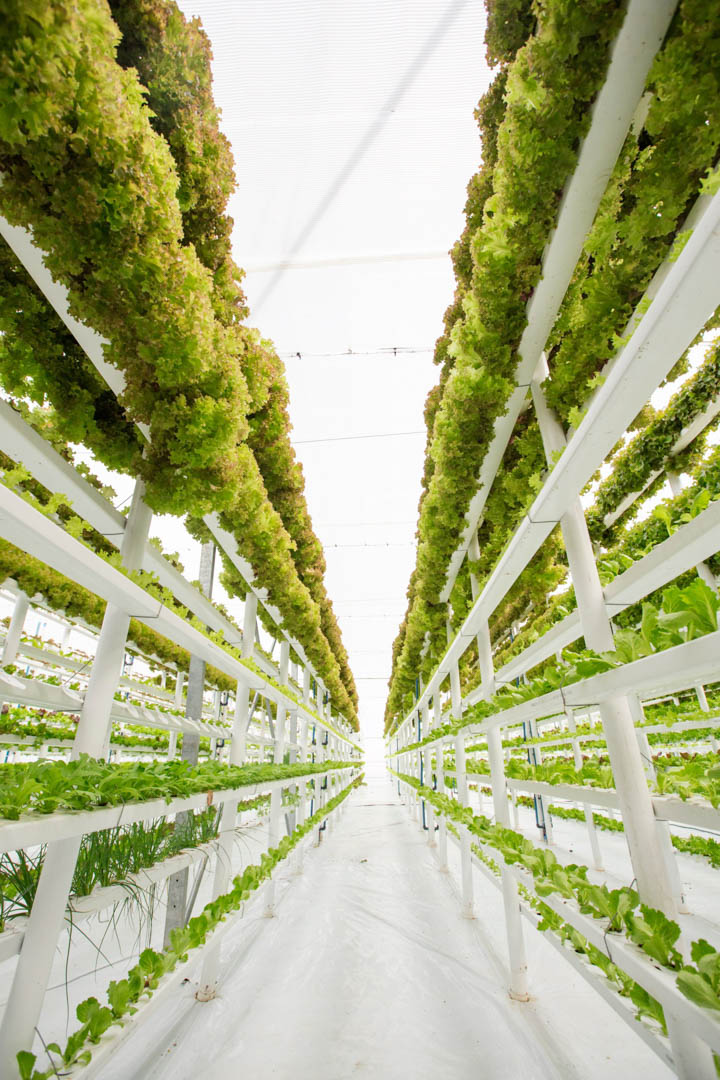
Hydroponics is a way of growing crops without soil. And in some cases, without sunshine.
Instead of growing in soil, fruits and vegetables grow with their roots under water.
While healthy soil has the essential nutrients and minerals that plants need to survive, water does not. So a mineral and nutrient solution is added to help support the plant life and aid in growth.
Some hydroponic crops also require a substrate for the roots of the plants to adhere to. Usually plant roots are held in place by soil, but in hydroponic systems popular substrates are rock wool, rice husks and pumice.
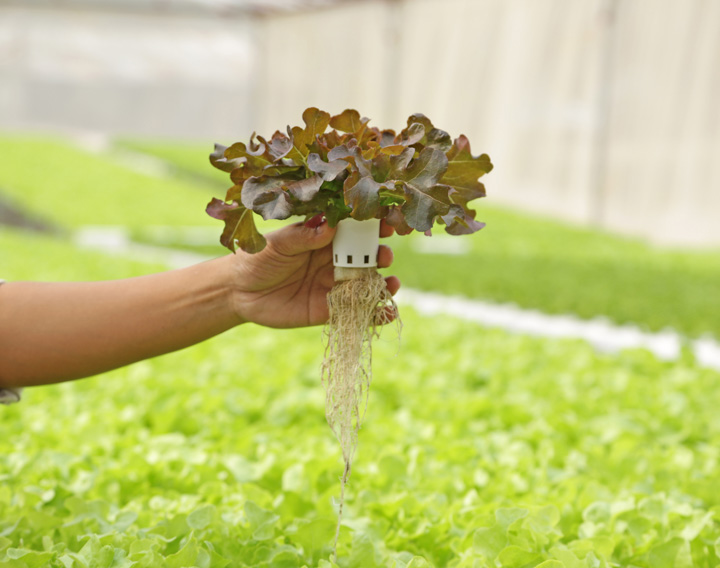
Another key difference between traditional agriculture and hydroponics is that hydroponic operations are almost always inside a building or greenhouse.
While sunshine provides life to soil-grown food, artificial lighting is often used in hydroponics. And in the absence of rain and healthy soil, water pumps circulate a nutrient-rich water solution to all the plant roots.
The technical term for hydroponics is controlled environmental agriculture and some call it indoor farming. You can see why.
Vertical farming is also an important part of many hydroponic operations. Vertical farming means that the plants are stacked upwards. This makes it possible to produce substantially more crop on the same piece of land compared to traditional farms.
For me, “plastic farm” is the phrase that comes to mind when I think of hydroponics. You have the plastic containers the plants grow in, the plastic sheeting used to cover the ground under the growing operation, the plastic piping used to carry the water and feeding solution to the plants, and the plastic to create the greenhouse structure.
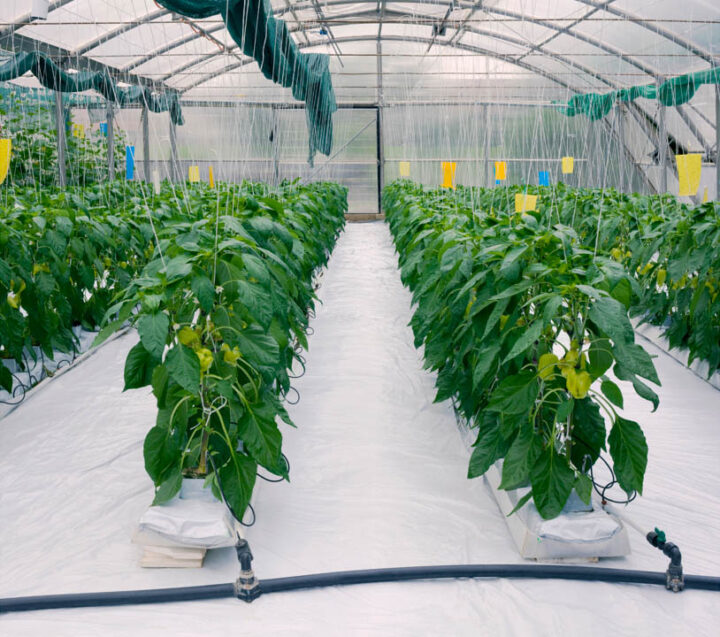
“Plastic Farm” is the phrase that comes to mind for me when I think of hydroponics.
Fun Fact: NASA is pouring a lot of research dollars into figuring out how to use hydroponics or aeroponics to grow food on other planets and in space. Aeroponics means the plant’s roots are dangled in misty air rather than directly in water.
What is Traditional Farming?
Traditional farming uses healthy soil to provide life-giving nutrients and minerals to crops.
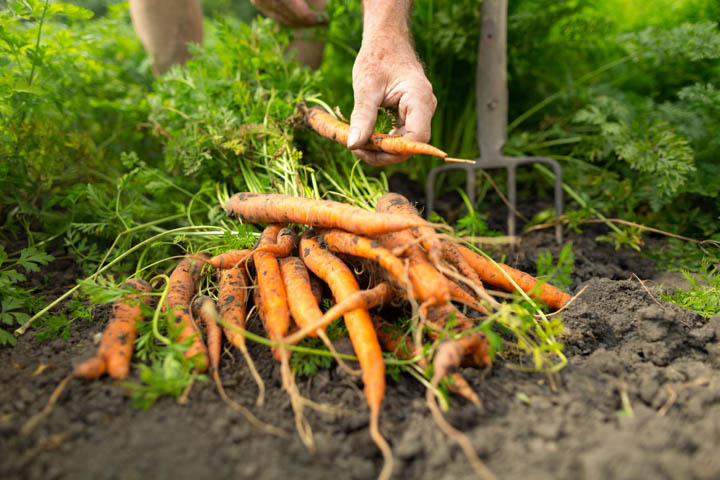
While hydroponics grows food in water, traditional farming grows food in healthy soil.
Traditional farming is different from conventional farming.
When we talk about conventional methods we mean ‘what is generally done’, a regular standard way of doing things. In modern times, conventional farming involves a lot of pesticides and herbicides, monocrops, confinement agriculture, GMOs and so on.
When we talk about something being traditional, on the other hand, we are referring to a long-established way of doing things. Traditional farming practices have been around a lot longer than modern conventional agriculture.
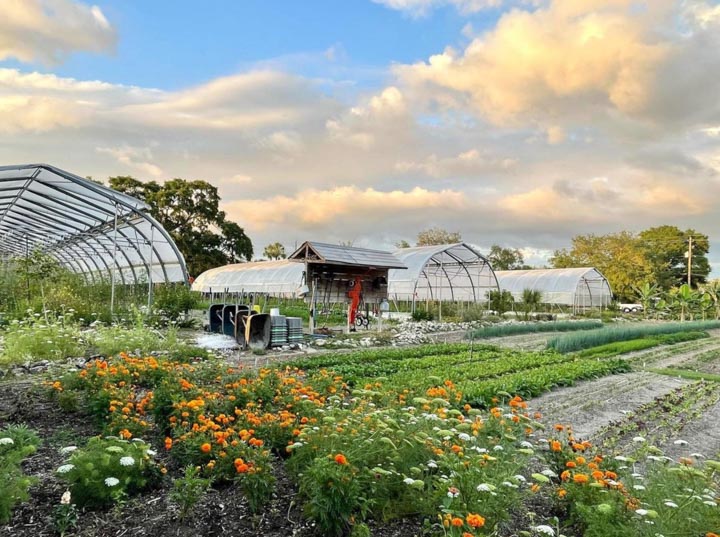
Unlike hydroponics, which erects buildings or lays plastic over soil, traditional farming techniques actually improve the health of the soil. As the soil becomes more fertile and nutrient-rich, farmers are LESS reliant on chemical fertilizer and pesticides.
While hydroponic farming involves a lot of computers, lab coats and highly sterilized spaces – traditional farming methods involve crop rotation, mixed cropping, organic farming and cover crops.
Facts about Hydroponics Versus Traditional Farming
Let’s dive into some facts about hydroponics and advantages of it that are touted by the hydroponics industry, investors and media.
If you look at these advantages critically you can see that that the same arguments are often given for conventional agriculture that sprays our food with pesticides, uses synthetic fertilizers and creates genetically modified plants that are hardier and more bug resistant.
1. Hydroponics yields more crops per square foot
Proponents of hydroponics, and the indoor farms who use it, often talk about the higher yields you get with hydroponics.
This is accurate and there are two main reasons why hydroponic farming systems have greater yields.
1. Crops grow faster in a hydroponic setup than they do in soil because the environment and amount of nutrients are carefully controlled to maximize output.
2. Vertical farming (where the plants are stacked in columns) enables you to grow more hydroponic plants per square foot than you can through traditional farming.
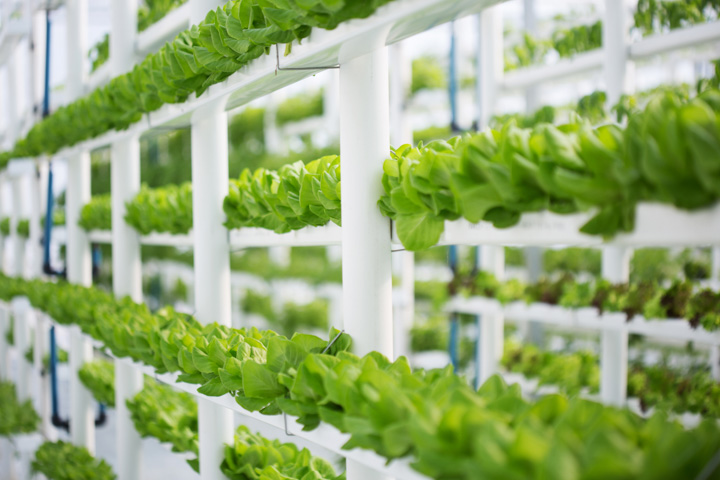
Higher crop yield is one reason why many say hydroponics is better than traditional farming. And certainly for the companies that grow hydroponic food, it’s better. But, when it comes to the food we eat to nourish our bodies, is crop yield the barometer we want to use to measure which is better?
I’ll turn to egg farming for a comparison.
A piece of land occupied by caged hens (half a square foot per hen) will yield more eggs than a piece of land occupied by a pastured raised hen (108 square feet per hen).

Does that make caged hens better or preferable to pasture raised hens for egg production? Sure if you asked the owner of the caged hen operation, but not if you asked most consumers.
2. Hydroponics feeds more people per acre
Hydroponic agriculture is also lauded because you can produce more food on a piece of land than you would if practicing traditional farming on that same land.
Hydroponic growing methods like vertical farming make it possible to 10x the output of a piece of land compared to traditional farms that grow food in the ground.
There is a fear circulating that we are going to run out of land to farm on, and hydroponics is swooping in to solve for this. It is unfortunate that modern agriculture is destroying our farm land, but laying plastic over that land and erecting hydroponic farms is not the only answer.
For example, using regenerative agriculture, land that was once barren can thrive once again. Roam Farm in Texas is a great example of this and you can read their story here. It’s fascinating and they are not the only ones doing this!
Note that feeding more people is also one of the arguments given for spraying our food with chemical pesticides and herbicides, factory-farmed animals and GMOs.
3. Grow crops year round with hydroponics
Imagine a world without growing seasons. A world in which tomatoes can grow any month of the year…even in North Dakota. A world in which we can enjoy fresh, not frozen, berries in December. This is the promise of hydroponic agriculture and it’s very real.
We are all used to seeing out of season produce at grocery stores. It’s a convenient upside of modern times where we don’t have to can and preserve if we want fruits and veggies during winter.
Without hydroponics this is only possible by importing our food from other countries or other regions of this country (ex. Florida).
Unfortunately much of the hydroponic produce we enjoy in the United States has been imported from other countries.
4. Hydroponic systems are easier for farmers to control and manage
Growing food indoors with a hydroponic set up means farmers are no longer in a battle of sorts with mother nature, bugs and weeds. The allure of hydroponics is real!
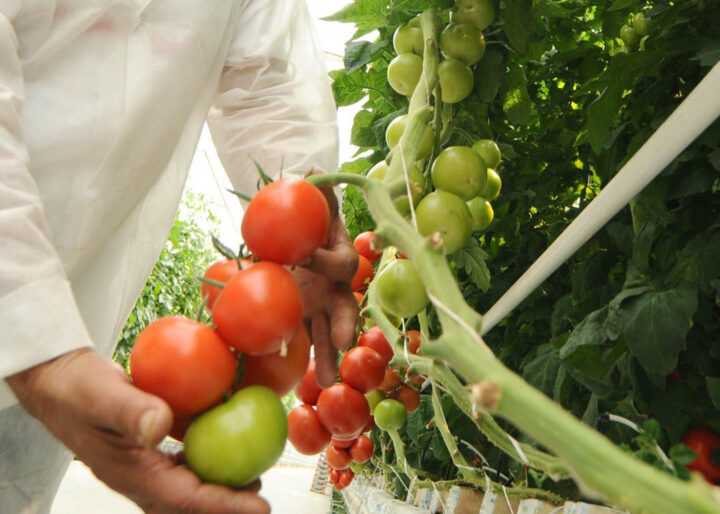
The unfortunate reality about traditional farming is it’s not easy work! Today’s farmers are being impacted by climate change – flooding, drought and new weather patterns.
As a result of these challenges, many say hydroponics is the future of farming.
I say the future of farming is regenerative, real organic agriculture. But that takes work and I don’t envy the farmers doing it!
Hydroponics on the other hand takes money (the initial investment to create a large scale hydroponics set up is substantial) and there is no shortage of investors in hydroponics.
The good news is there are also a lot of passionate farmers who consider themselves stewards of the land and believe in soil-grown food.
I say the future of farming is regenerative, real organic agriculture.
5. Is hydroponics better for the environment?
Another often-discussed benefit of hydroponics is that it’s better for the environment.
I would argue that hydroponics might be better for the environment if you’re comparing it to conventional agriculture, but not if you’re comparing it to real organic agriculture (soil-grown) or especially regenerative agriculture.
Regenerative agriculture seeks to restore and actively improve the land. And it is possible on a large scale.
Certainly conventional agriculture isn’t good for the environment, the land, the food we grow or the humans who eat that food.
In case you’re wondering, here are some reasons why hydroponics are even considered environmentally friendly in the first place:
1. Water conservation
Hydroponics uses less water than conventional agriculture – because water that is not absorbed by the plants is recirculated rather than running off.
Runoff and the soil erosion it causes, is common in conventional agriculture when soil conditions aren’t managed. Today many small and large scale farms are implementing processes that protect the land from erosion and improve the soil for future generations.
2. Reduced use of pesticides and herbicides
A controlled indoor environment (hydroponics) reduces or eliminates pesticide use to kill bugs and herbicide use to kill weeds.
Real organic agriculture doesn’t use synthetic chemicals to kill bugs and weeds either.
3. Uses less land
Vertical hydroponic systems, where plants are stacked on top of each other, use less land to grow more food.
Regenerative agriculture and traditional farming techniques can restore land that has been written off as unfit to grown on – as a result of the damage done by conventional agriculture.
4. Less trucks on roads
Historically, the only way to have fresh produce outside of the local growing season is by importing it from other regions or countries. This puts more trucks on roads and increases greenhouse gas emissions as a result.
The argument is that hydroponic agriculture makes it possible for American companies to grow fresh fruits and vegetables year round. This will cut back on our need for imported foods.
This is a fantasy.
The United States is actually the largest importer of hydroponic food in the entire world. Most of it coming from China, Mexico and Spain. These countries can provide cheaper hydroponic produce than we can in the United States.
Just as hydroponic is replacing soil-grown in the United States, hydroponic from other countries is replacing American hydroponic.
Hydroponic Organic versus Soil-Grown Organic
Though it’s not always apparent, an increasing percentage of the certified organic produce you’ll find at the grocery store was grown hydroponically.
This is in large part because growing organic crops within a hydroponic farming system is easier than farming organically outdoors in soil.
Why hydroponic organic is easier than soil-grown organic
1. Because hydroponic produce is grown in an indoor controlled environment, the need for herbicides and pesticides is virtually eliminated. Traditional organic farmers need to get creative and take extra effort to ensure their land and farming practices maintain organic standards.
2. Hydroponic farms are not held to the same crop standards required under the USDA organic guidelines – because in hydroponic farming there is no soil.
Crop standards are no joke for farmers. For example, in soil-grown organic agriculture, farmers must adhere to these rules:
-> “Land must have had no prohibited substances applied to it for at least 3 years before the harvest of an organic crop.” Hydroponics uses grow trays and net pots rather than land to grow food, so this requirement is not applicable to hydroponic farms.
-> “Soil fertility and crop nutrients will be managed through tillage and cultivation practices, crop rotations, and cover crops, supplemented with animal and crop waste materials and allowed synthetic materials.” No need to be bothered with crop rotation and cover cropping when you grow food hydroponically. Another win for certified organic hydroponic farms.
How to Recognize Hydroponic Produce at the Grocery Store
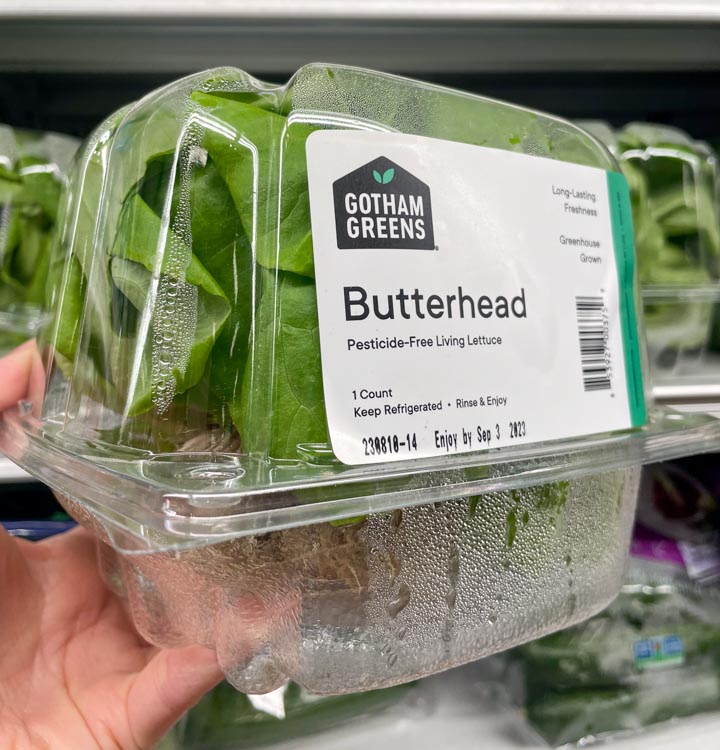
As a consumer, you won’t always known whether the organic food you’re seeing at the grocery store was grown in soil or water.
Unfortunately, there are currently no laws in the United States that require hydroponic growers to label their food as such.
In lieu of a hydroponic label on fruits and vegetables, here are a few things you can look for:
The Real Organic Project Seal: The Real Organic Project was started by farmers to protect the meaning of organic. Farmers producing certified organic food can apply to use the Real Organic seal if their food was grown in the soil, not hydroponically.
Scrutinize the more common hydroponic crops: tomatoes, lettuce, strawberries, peppers and cucumbers are the most popular type of crop grown hydroponically.
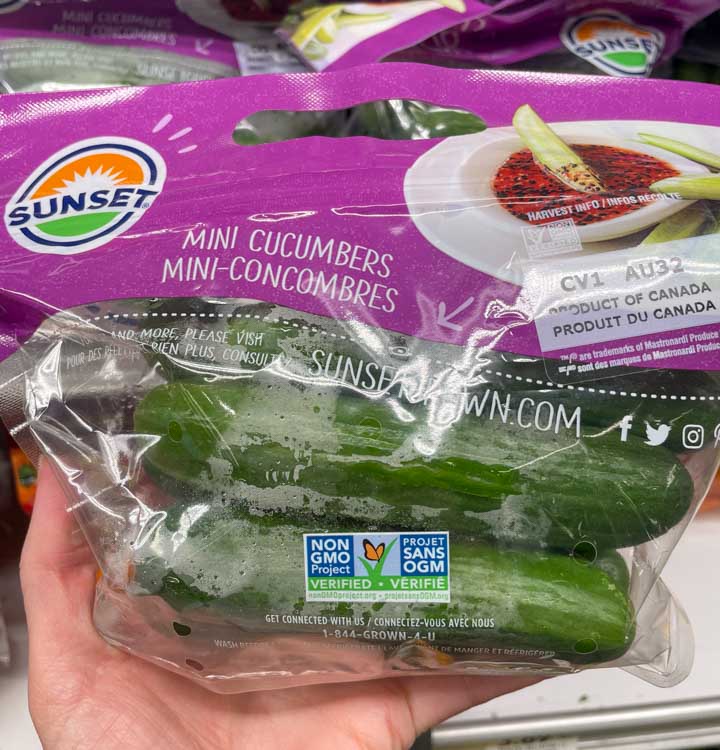
Watch for perfect produce: perfectly round and red tomatoes with the green stem still attached, uniform heads of lettuce in plastic clamshells with the roots still attached.
Read the writing on the package: some hydroponic farms do state this on their packaging. Others are obvious by their company name, such as Hydrofarm and AeroFarms.
Recognize popular hydroponic brand names: NatureSweet, Vertical Roots, Revolution Farms, 80 Acres Farms and Sunset are some of the biggest hydroponic brand names found at grocery stores in the United States.

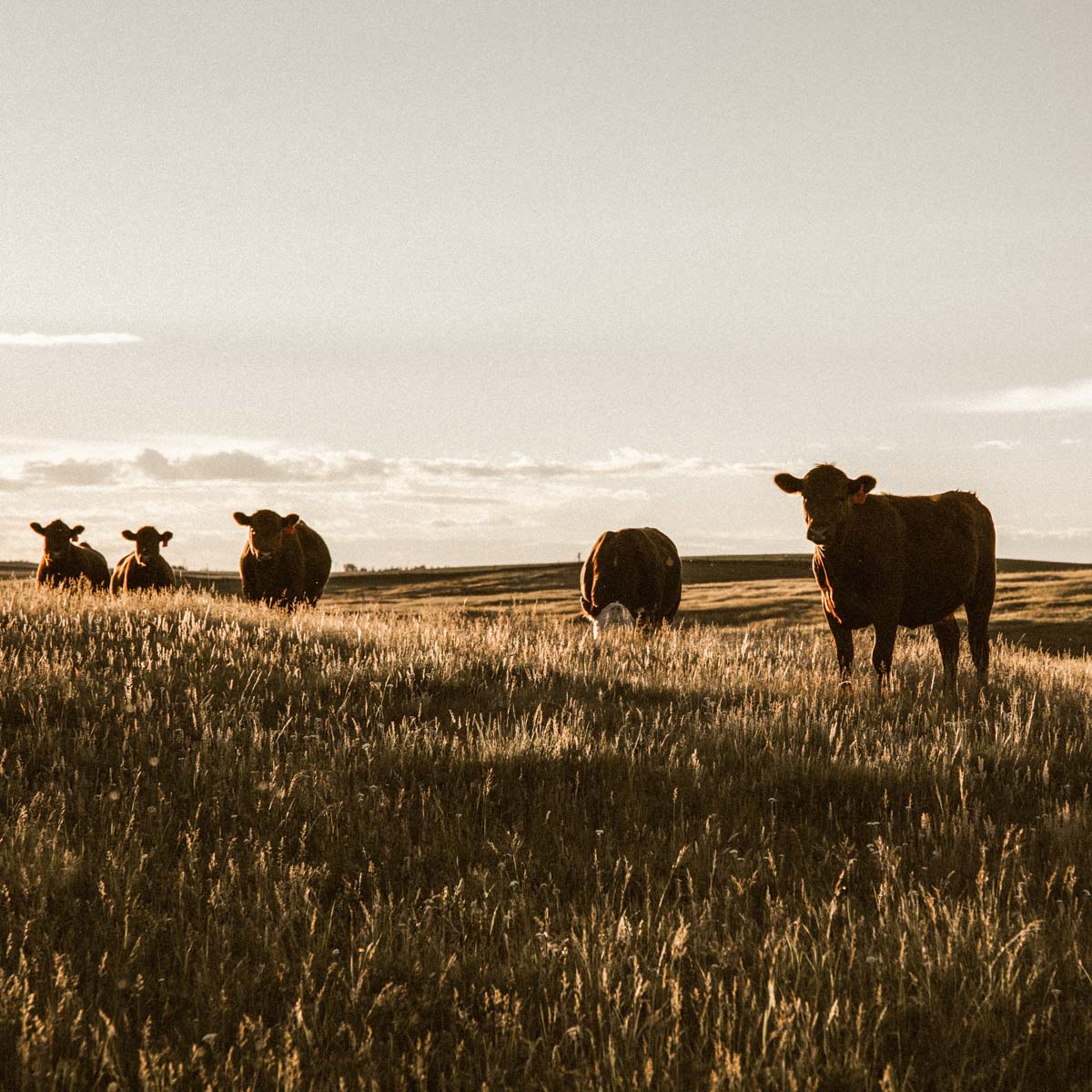
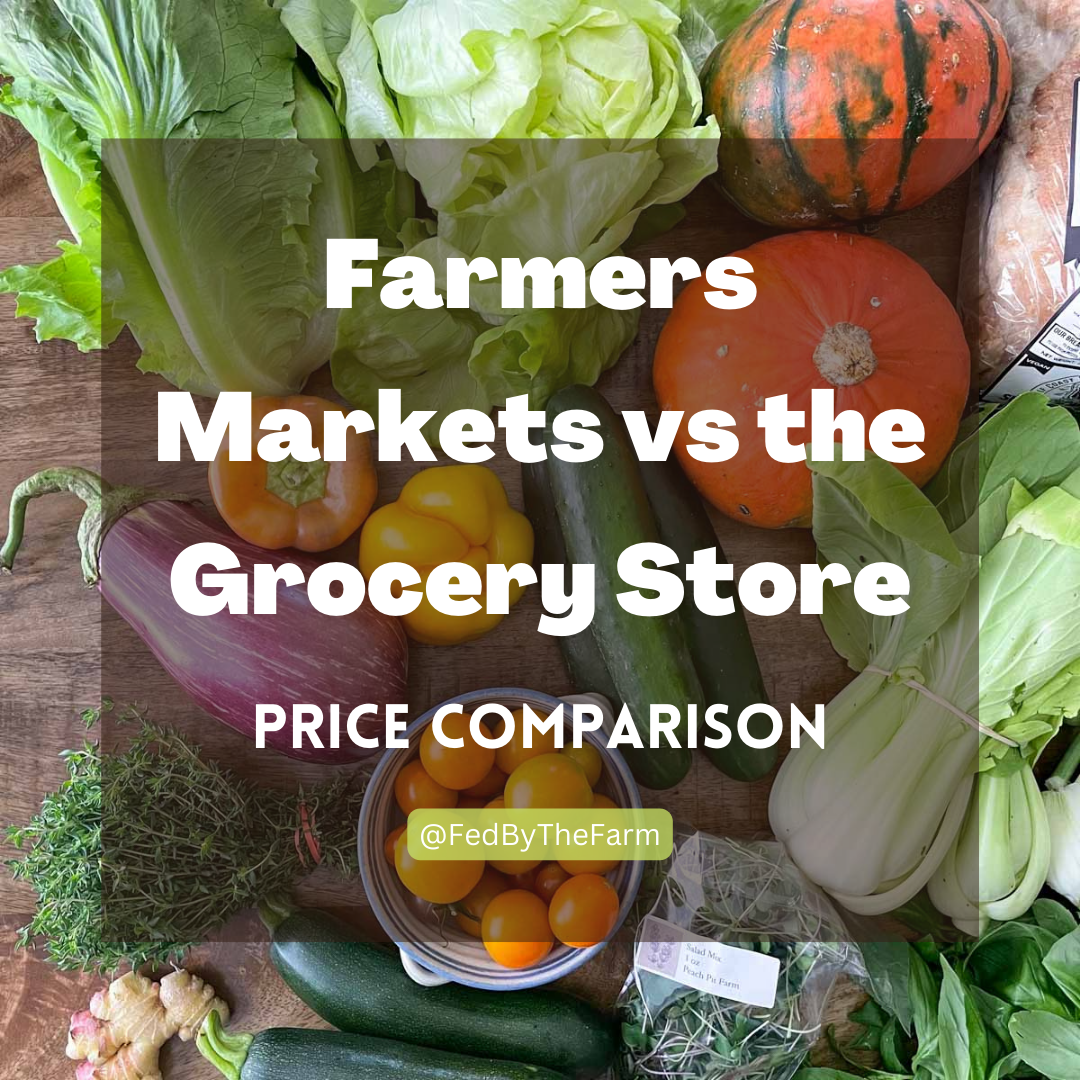



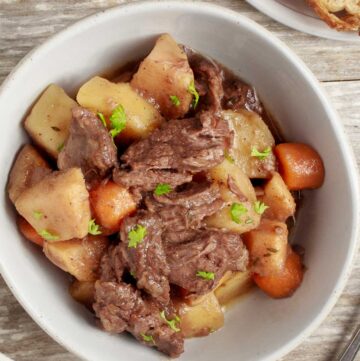

Leave a Reply